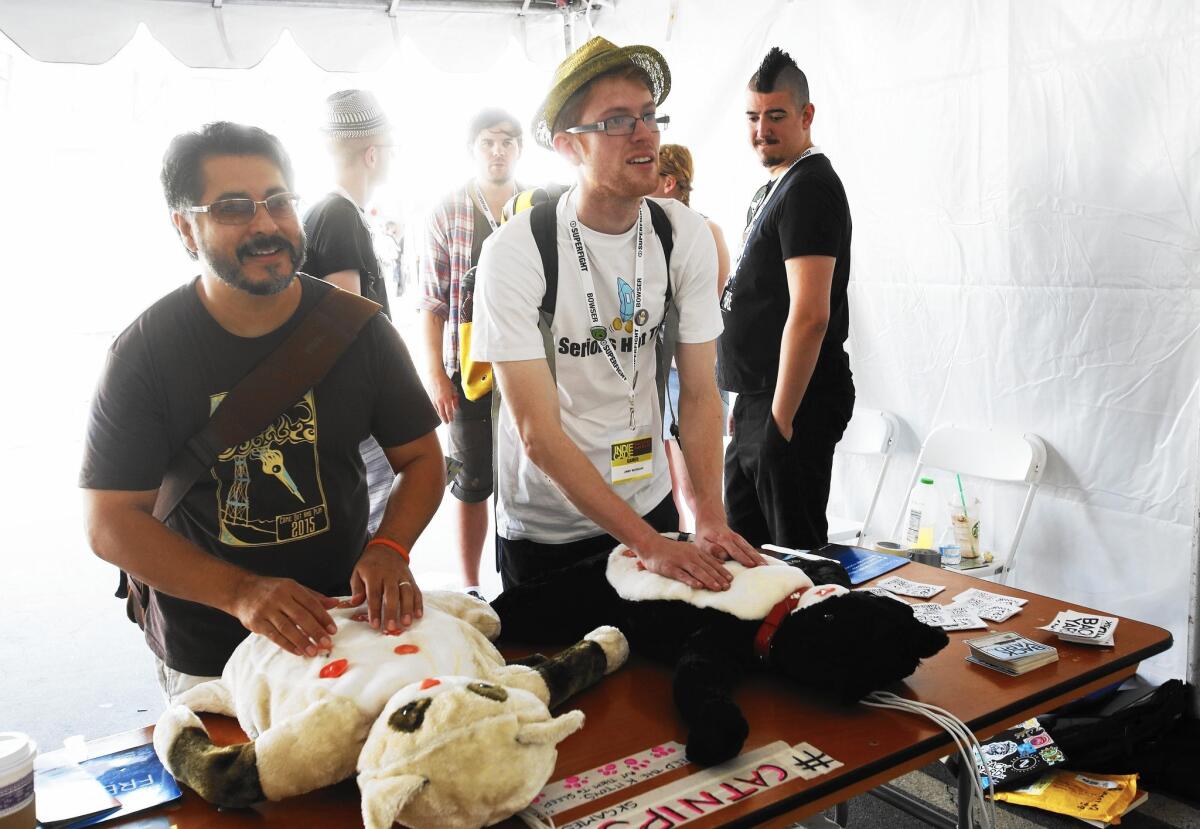Games festival IndieCade relocates to USC

This fall, the University of Southern California, home to the nation’s most highly-regarded video game design program, will host IndieCade, one of the gaming industry’s most respected festivals. Celebrating its 10th year, the festival, which drew about 7,000 people in fall 2015, has long called Culver City home.
Increasing development in Culver City — the bulk of IndieCade was held outdoors in a parking lot — forced festival organizers to relocate. USC, whose professors and students often showcase games at the event, will hold the festival in and around the School of Cinematic Arts Oct. 13-16.
The festival’s growth mirrors that of the independent game movement, and the 200-plus games at IndieCade often showcase the more experimental and risk-taking side of the industry. Last year’s games included “Cibele,” which chronicled a young woman’s first love and heartbreak; “Line Wobbler,” a game made entirely of LED lights; and the “Goonies”-inspired teen thriller “Oxenfree,” among many others.
“IndieCade is vitally important to the vibrant Los Angeles game development scene for the community that it provides — not just for developers in L.A., but for the people from all around the world who come to our wonderful city for the festival each fall,” said Richard Lemarchand, a game designer and associate professor at USC.
Last year, Lemarchand brought his game “The Meadow” — a meditative, surreal virtual-reality experience in which players come face to face with inquisitive, red-hued, one-eyed creatures — to the festival.
“[IndieCade]’s also important — and almost unique — in the way that it brings the world of artistic and experimental games to the general public,” Lemarchand said. “It’s always great to see families and people who might not normally play games discovering one of the brand-new creations being shown in the festival.”
Stephanie Barish, one of the primary architects of IndieCade, said she didn’t consider leaving Los Angeles when she realized the festival would have to give up its Culver City space. She cited L.A.’s robust game-design community as a reason to stay.
Indeed, L.A. helped fuel the underground game movement, thanks in part to the runaway success of thatgamecompany’s “Journey,” a calming game of exploration from veterans of USC’s game design program.
Though IndieCade features industry-only panels, the bulk of the festival is geared toward the general public and is home to a mix of games — board, virtual reality, video and even playground — many attempting to put the player in previously unexplored territory.
Among the festival’s past success stories was “Johann Sebastian Joust,” a game, ultimately released for Sony’s PlayStation platforms, that is centered entirely on motion controls. Players walk around one another, moving in time to music, and try to keep the controller as still as possible.
“I’m always most excited about seeing games at IndieCade that just go places we haven’t gone before,” Tim Schafer, an industry veteran who founded the Bay Area’s Double Fine Productions, told The Times at last year’s festival.
“Life is very broad,” said Schafer, who previously worked for LucasArts. “Games look at a small part of it. So any time people try to look at a different part of it, it’s exciting.”
ALSO
Playing with sex: This year’s IndieCade shows how games are getting intimate
IndieCade festival helps game enthusiasts savor the ‘subtle stuff’
‘No Man’s Sky,’ arguably the world’s largest video game, asks if bigger is better
More to Read
The biggest entertainment stories
Get our big stories about Hollywood, film, television, music, arts, culture and more right in your inbox as soon as they publish.
You may occasionally receive promotional content from the Los Angeles Times.











